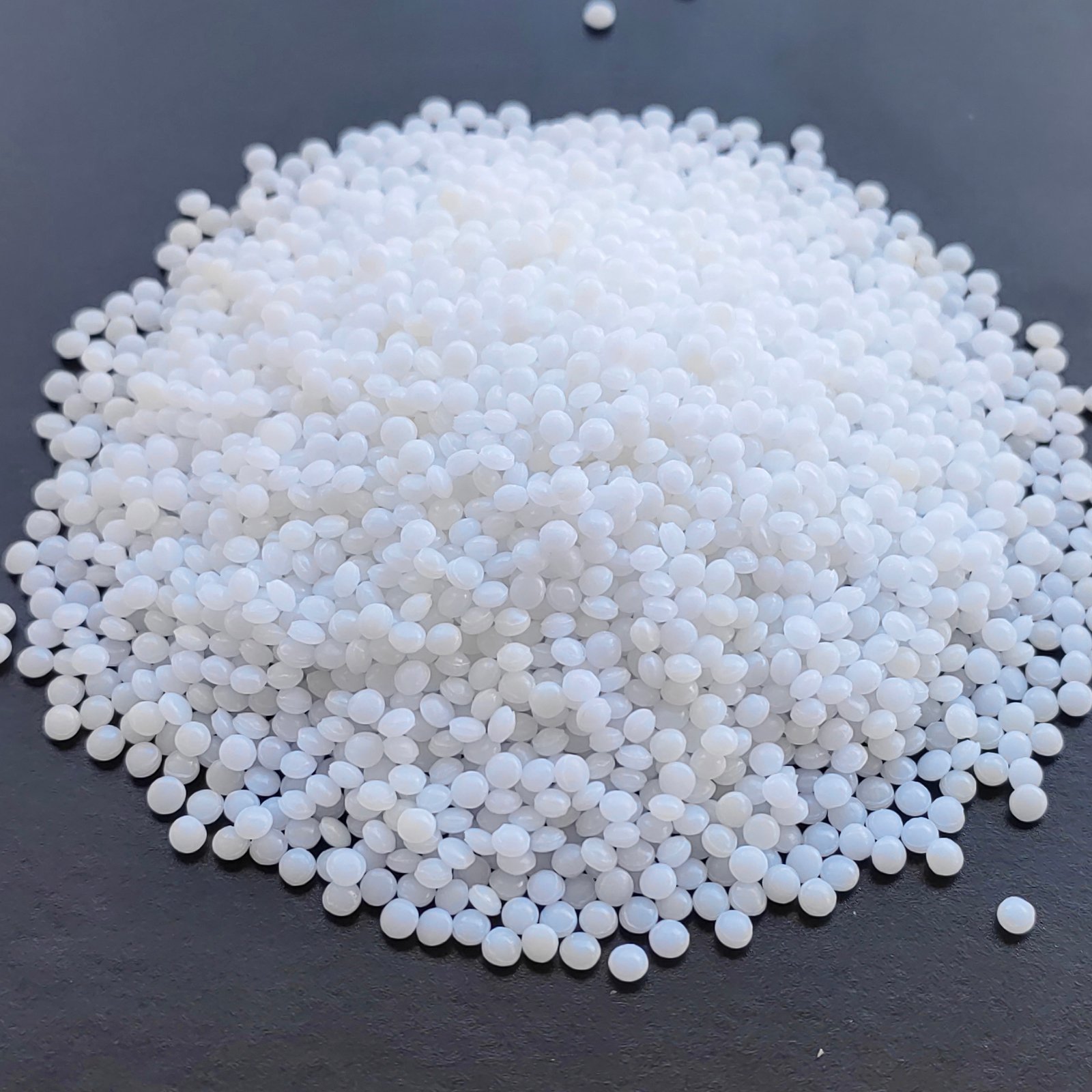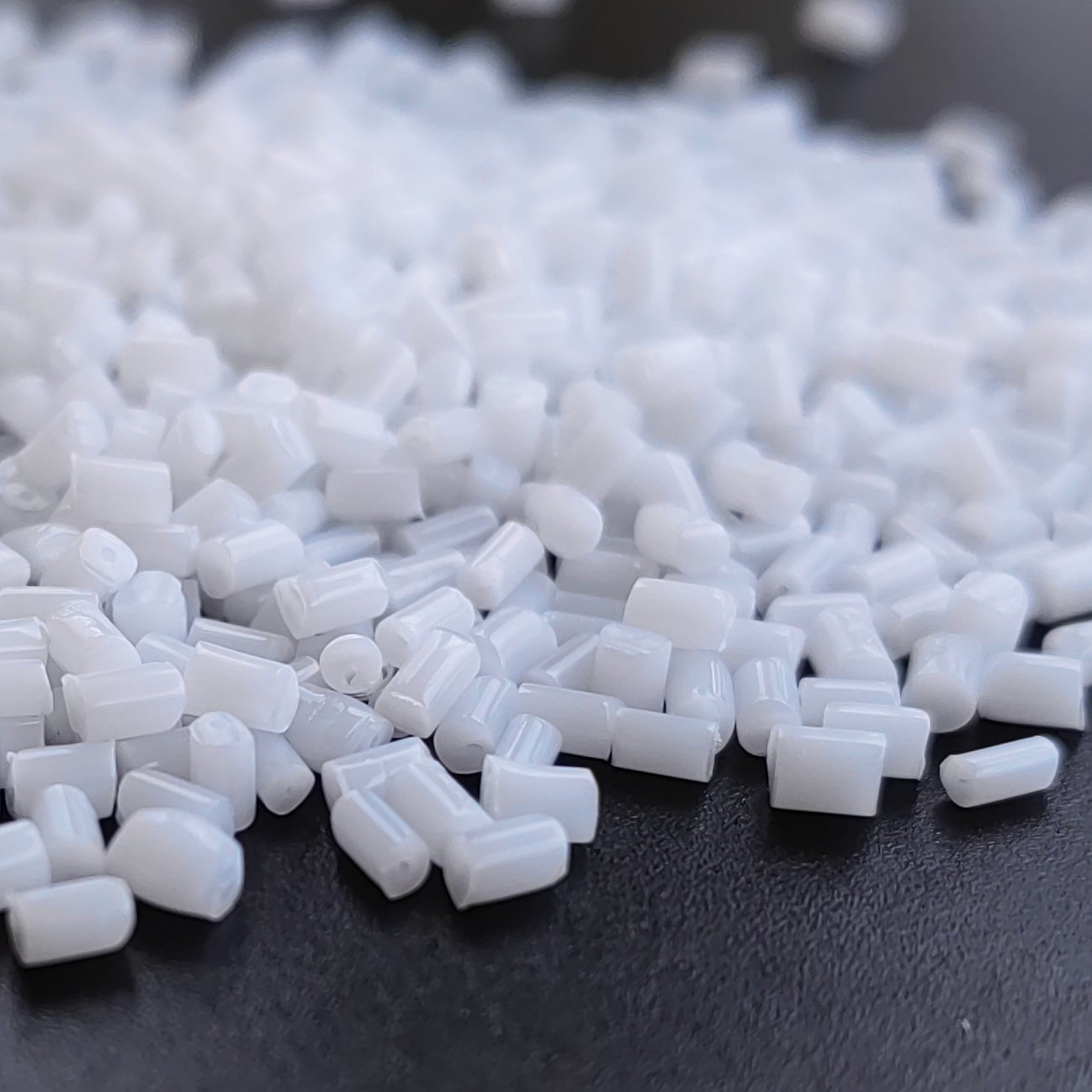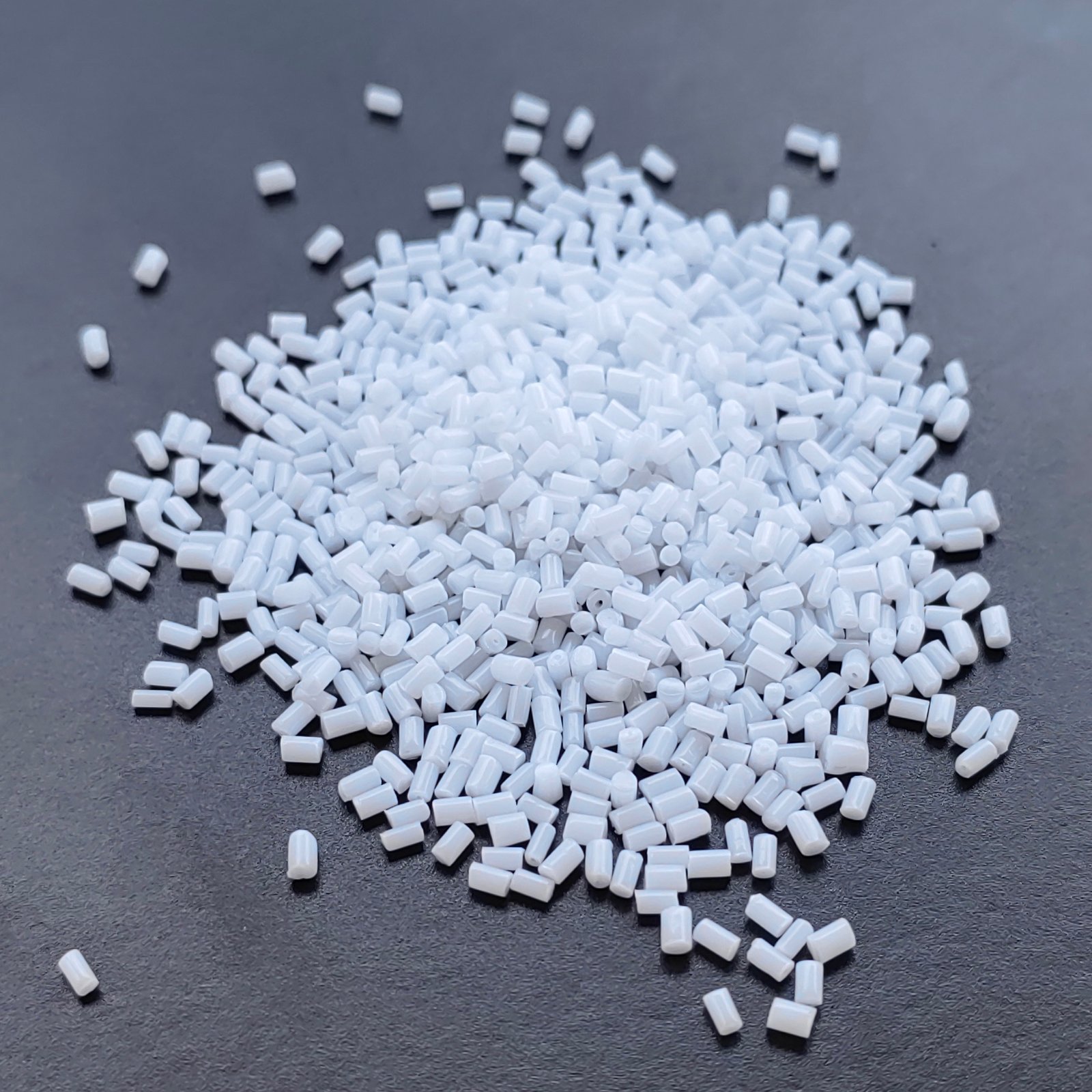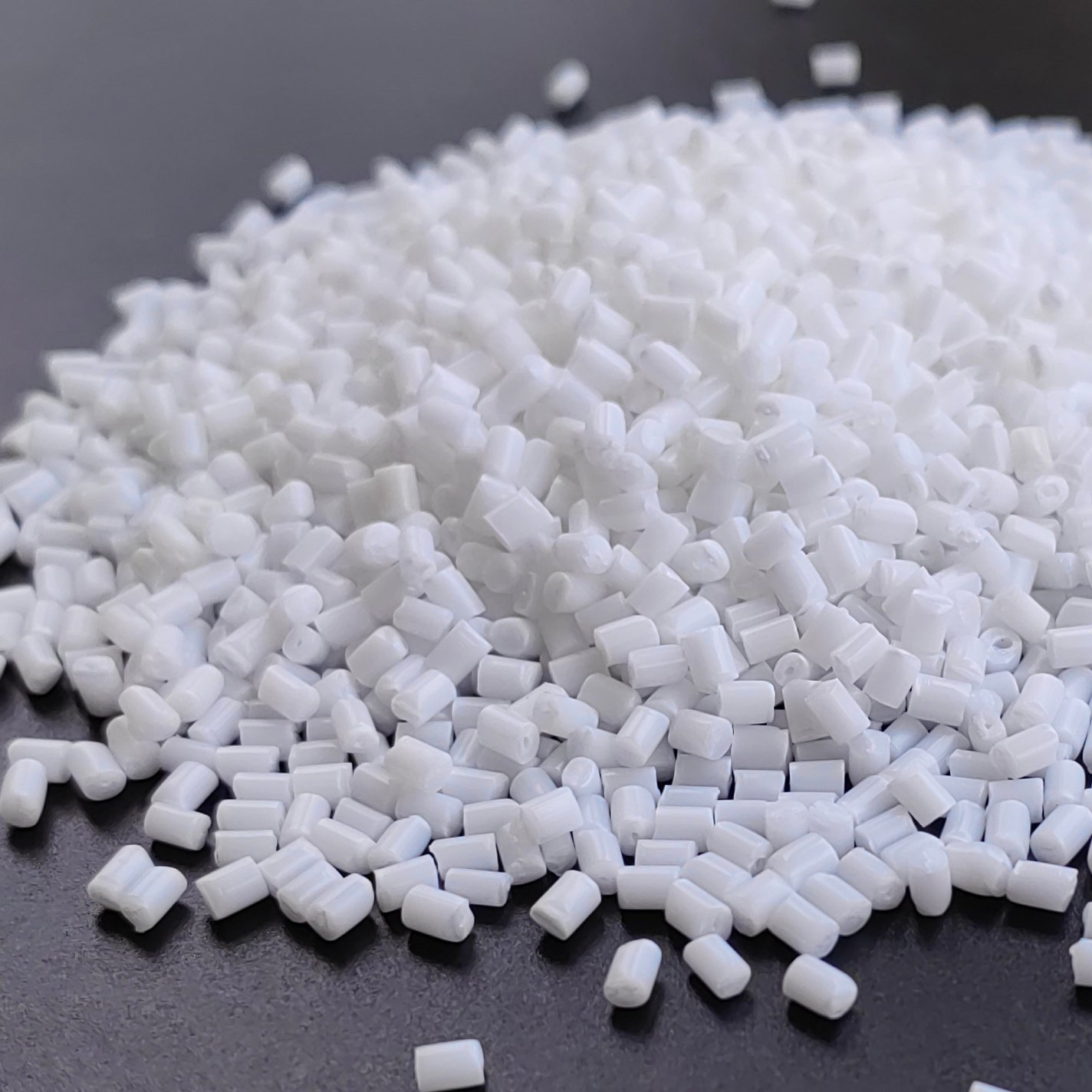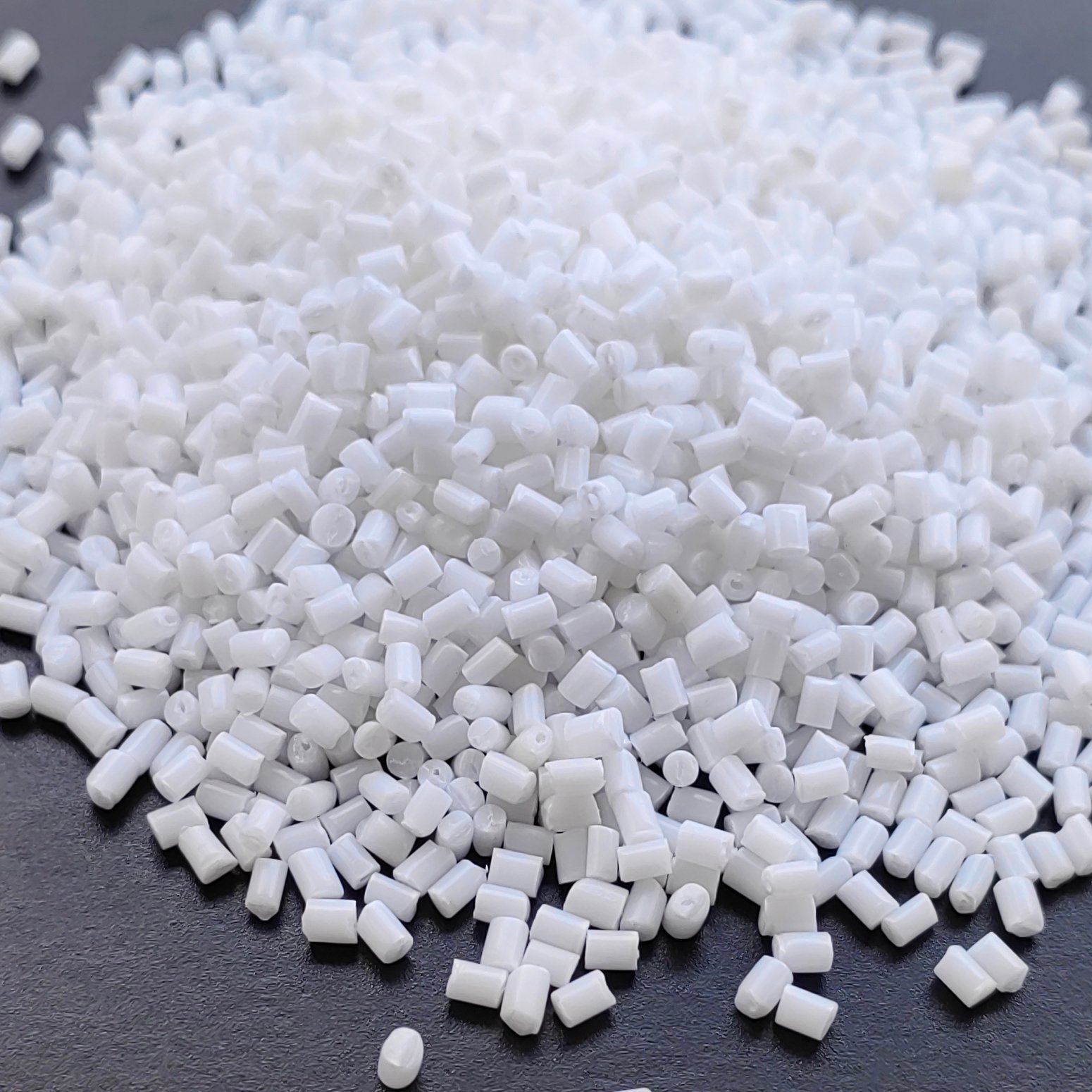PRODUCTS


LUCEL POM EC-605B plastic raw material
Product Struction
Polyoxymethylene (POM), scientifically known as polyformaldehyde, also called Delrin or acetal, is a thermoplastic engineering plastic polymerized from formaldehyde and other raw materials. POM is characterized by high density and high crystallinity, and it comes in two types: POM-H (homopolymer) and POM-K (copolymer). Both types exhibit excellent physical, mechanical, and chemical properties, particularly outstanding wear resistance.
POM materials have a structure with no side chains, high density, and strong crystallinity. This makes the surface smooth and glossy, the material hard and dense, and typically pale yellow or white. POM can be used long-term within a temperature range of -40 to 100°C, with wear resistance and self-lubricating properties far superior to most engineering plastics. Additionally, POM has good oil and peroxide resistance, and the addition of UV stabilizers can significantly enhance its UV resistance.
Specifically, the POM EC-605B material has the following excellent properties: a flammability rating of HB, a tensile strength of 59 MPa at 23°C, an elongation of 10%, a flexural modulus of 2500 MPa, a flexural strength of 88 MPa, and a notched Izod impact strength of 3.57 kJ/m² at 23°C. Its heat deflection temperature is 160°C at 0.45 MPa and 110°C at 1.8 MPa in non-annealed conditions. It has a specific gravity of 1.42 g/cm³, a shrinkage rate of 1.8% in the flow direction, and 2.1% in the perpendicular direction, with a Rockwell hardness of 80.
Due to its excellent mechanical and chemical properties, POM EC-605B is widely used in mechanical parts, electronic and electrical products, and automotive components. For example, it is often used to manufacture gears, bearings, and cams, which require materials with excellent wear resistance and self-lubricating properties. In electronic and electrical products, POM EC-605B is used for making connectors and switches due to its insulation performance and mechanical strength. In the automotive industry, this material is used for manufacturing fuel system components and dashboard assemblies, owing to its outstanding oil resistance and high strength.
| Mechanical behavior | Condition | Standard | Value | Unit | |||
| Tensile Strength | Break 23°C | ASTM D638 | 59 | MPa | |||
| Elongation | 23°C | ASTM D638 | 10 | % | |||
| Flexural Modulus | 23°C | ASTM D790 | 2500 | MPa | |||
| Flexural Strength | 23°C | ASTM D790 | 88 | MPa | |||
| Izod Notch Impact | ASTM D256 | 30.61 | kJ/m² | ||||
| Izod Notch Impact | 23°C | ASTM D256 | 3.57 | kJ/m² | |||
| Thermal | Condition | Standard | Value | Unit | |||
| HDT | Unannealed 0.45MPa | ASTM D648 | 160 | °C | |||
| HDT | Unannealed 1.8MPa | ASTM D648 | 110 | °C | |||
| Physical property | Condition | Standard | Value | Unit | |||
| Density | ASTM D792 | 1.42 | g/cm³ | ||||
| Shrinkage | Flow | ASTM D995 | 1.8 | % | |||
| Shrinkage | xFlow | ASTM D995 | 2.1 | % | |||
| Hardness | Condition | Standard | Value | Unit | |||
| Rockwell Hardness | M(Scale) | ASTM D785 | 80 | ||||
| Flammability | Condition | Standard | Value | Unit | |||
| Flame Rating | Black 0.75mm | UL94 | HB | ||||
| Flame Rating | Black 2.9mm | UL94 | HB | ||||



